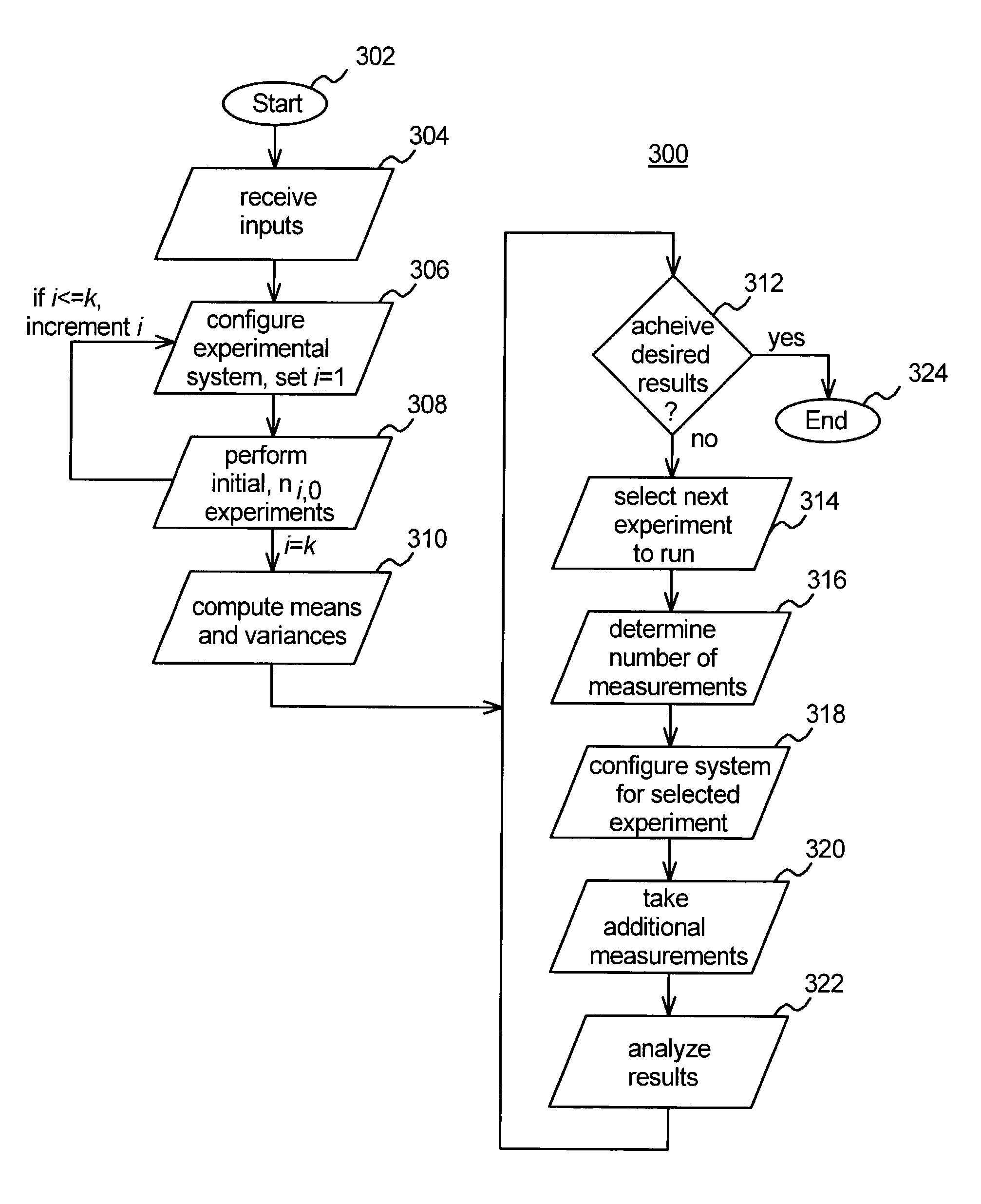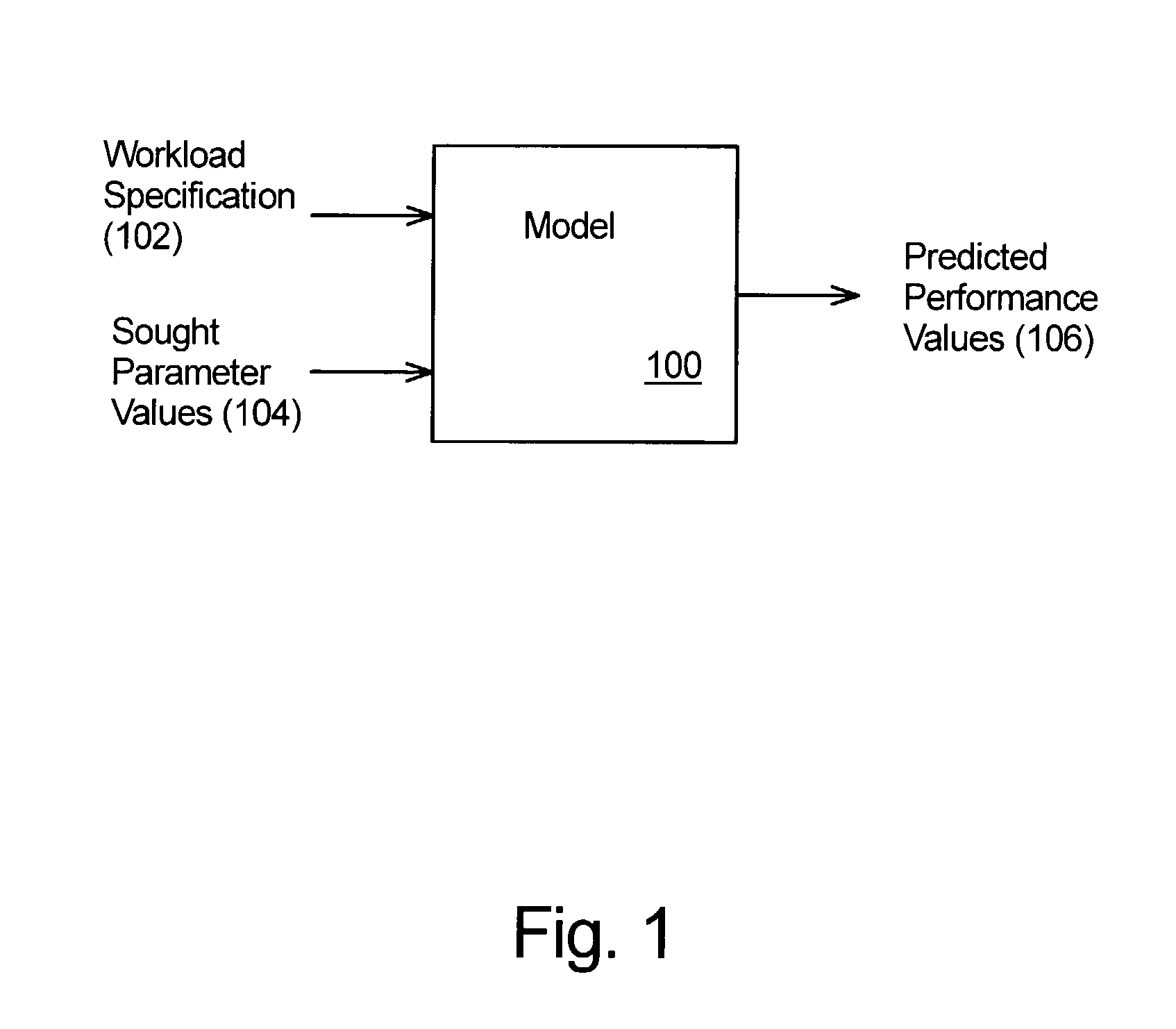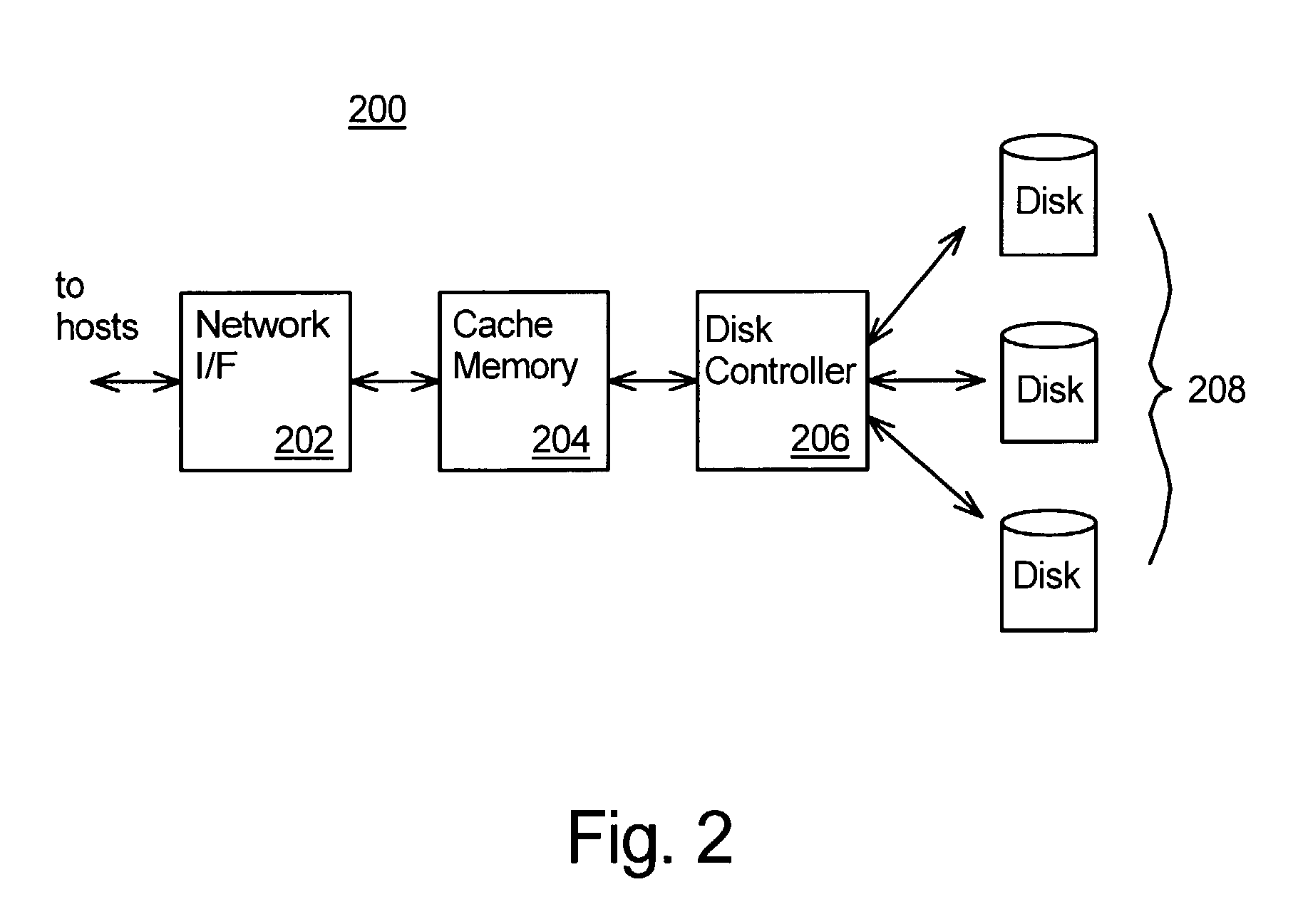Technique for programmatically obtaining experimental measurements for model construction
a programmatic measurement and experimental technology, applied in the field of system and device modeling, can solve the problems of affecting the advantage obtained by using a model, affecting the behavior of the real system, and being difficult to directly measure internal behavior of the system
- Summary
- Abstract
- Description
- Claims
- Application Information
AI Technical Summary
Benefits of technology
Problems solved by technology
Method used
Image
Examples
Embodiment Construction
[0015]FIG. 1 illustrates a model 100 of a real system or device that may be constructed in accordance with the present invention. The model 100 may be either a simulation model or an analytical model or a hybrid of both techniques. For a simulation model, the model 100 includes software and hardware that emulates dynamic and static aspects of the real system or device being modeled. For an analytical model, the model 100 includes a set of formulas or mathematical algorithms that may be performed by general- or special-purpose computer hardware. For either case, the model 100 includes computational algorithms which characterize behavior of the real system. For example, an analytical model may include a set of linear equations. For either type of model, a workload specification 102 and a number of parameter values 104 are applied as inputs to the model 100. The input parameters 104 are referred to herein as “sought” parameter values because aspects of the present invention are directe...
PUM
 Login to View More
Login to View More Abstract
Description
Claims
Application Information
 Login to View More
Login to View More - R&D
- Intellectual Property
- Life Sciences
- Materials
- Tech Scout
- Unparalleled Data Quality
- Higher Quality Content
- 60% Fewer Hallucinations
Browse by: Latest US Patents, China's latest patents, Technical Efficacy Thesaurus, Application Domain, Technology Topic, Popular Technical Reports.
© 2025 PatSnap. All rights reserved.Legal|Privacy policy|Modern Slavery Act Transparency Statement|Sitemap|About US| Contact US: help@patsnap.com



